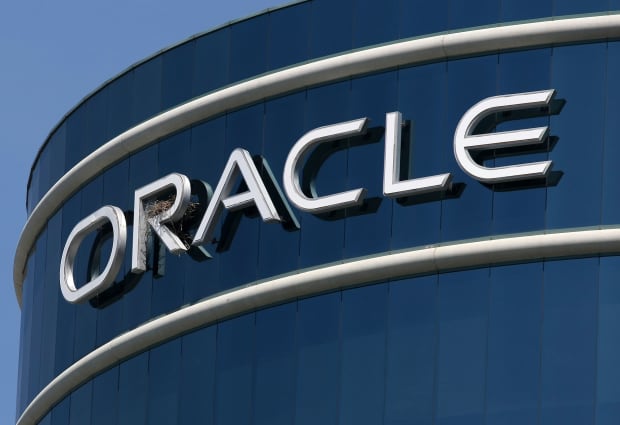This post was originally published on this site

Oracle has released the most detailed look at its workforce demographics so far.
Getty Images
After years of battling the release of detailed information about employee demographics, Oracle Corp. has joined other Silicon Valley tech giants in being more transparent about numbers that show a largely white and male workforce.
For the first time, the company published diversity figures that included numbers of new hires by race/ethnicity and gender, as well as its EEO-1 report breaking down workforce and leadership demographics, which companies are required to file with the federal Equal Employment Opportunity Commission. Oracle ORCL, +0.07% had previously argued against a public-records request for that report, although news organization Reveal was successful in getting access to the company’s 2015 filing last year and reported some numbers from it.
The numbers the Redwood City, Calif.-based company published late last week show that like many other tech companies, its workforce is largely white and male. Of its U.S. workforce, Oracle — which has a female chief executive, Safra Catz — said that 68.8% are men and 31.2% are women. Almost 60% of its overall workforce is white, 26.9% Asian, 6.5% Hispanic, 3.7% Black, 2.5% “two or more,” 0.4% Pacific Islander and 0.2% Native American.
The company said its management ranks were 68.8% white and 28.2% Asian, with Hispanic and Black representation lower at 4.8% and 2%, respectively. It said management was 26.3% female. The company also released its federally mandated EEO-1 report from 2018 that showed different figures: 111 of its 141 executives, senior officials and managers were white in that year, almost 80%, while only 16 were women, roughly 11%.
That female leadership figure is lower than two comparable Silicon Valley companies that have released their federal diversity filings, Cisco Systems Inc. CSCO, +1.78% and Salesforce.com Inc. CRM, -0.33%. Their EEO-1 reports show 22% and 25% female representation among their top leadership in 2018, respectively. On racial representation, Oracle was in line with Salesforce, which reported 81% white employees in the upper ranks of its workforce, and better than Cisco, which reported that 91% of top employees were white.
Oracle has been among the most secretive of the Silicon Valley tech giants when it comes to sharing information about the makeup of its workforce. The company has cited competitive concerns and employees’ right to privacy in letters arguing against the release of its EEO-1 reports, in which companies must disclose race and ethnicity numbers of employees in different job categories.
The company was facing a shareholder resolution this year that would’ve urged more transparency about its workforce diversity, but the group that proposed the resolution, As You Sow, withdrew it after months of talks culminated in Oracle promising to release the information.
Meredith Benton, a consultant with Berkeley, Calif.-based As You Sow and a principal at Whistle Stop Capital, said Oracle is “playing catch-up” when it comes to releasing its EEO-1, but that it is “showing leadership” by sharing its new-hire data by gender, race and ethnicity. Benton said she believes Oracle compared itself to its peers, which have been disclosing detailed information for years.
“I think it was a big part of why they moved forward,” she said. “They could see where the herd was running. People start to wonder why, if you’re alone.”
Vickie Thrasher, senior vice president for human resources at Oracle, said in a statement: “Oracle believes diversity and inclusion is a business imperative that inspires innovation and increases employee engagement. We are committed to fostering an inclusive global culture where employees are valued and able to bring their full selves into work every day.”
Oracle has faced legal action over diversity issues. In September, it won a lawsuit against the Department of Labor, which had accused it of deliberate pay bias against women, Black and Asian employees. The company is also facing a shareholder lawsuit filed last year, which accuses it of “repeatedly making false assertions about the company’s commitment to diversity.” Cisco is facing a similar lawsuit.
Tech companies began releasing their workforce demographics publicly in 2014. Oracle’s self-reported numbers are similar to those of other legacy Silicon Valley tech companies such as Cisco, which reported its 2019 U.S. workforce was 72% male and 28% female. Cisco’s overall U.S. employee numbers: 52% white, 37% Asian, 5.6% Hispanic/Latino, 3.8% Black, 1.3% two or more, 0.2% Native American and 0.2% Pacific Islander.
Fellow software giant Salesforce reported U.S. numbers from 2019 of 63.7% men and 36.1% women. Its U.S. workforce was 60% white, 26.2% Asian and Indian, 4.5% Hispanic or Latino, 3.4% Black, 2.8% multiracial, 2.7% undisclosed, 0.3% Native Hawaiian or Pacific Islander and 0.2% Native American or Native Alaskan.

